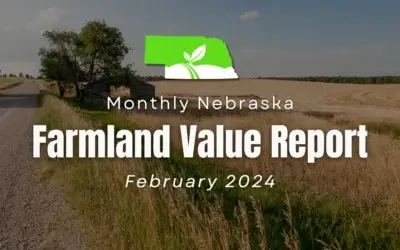Steps To Mitigate Farm Financial Stress


Jason J Smith
Auctioneer & Land Broker
Jason is an experienced farmland broker and auctioneer with extensive experience in farmland sales across this Midwest. Jason has worked with hundreds of clients to create advantageous outcomes. If you are selling land schedule a consultation with Jason by calling or using the calendar.
Phone: 515-537-6633
Take Steps to Mitigate Farm Financial Stress
It’s no secret the ag economy continues to struggle. USDA’s Economic Research Service (ERS) predicts 2016 net farm will drop for the third straight year. The $71.5 billion forecast is down 11.5% from 2015. If realized, 2016 net farm income would be the lowest since 2009.
Negative views about the economy were confirmed last month in the Purdue University/CME Group October Ag Economy Barometer, which dropped to its second lowest reading ever. Purdue University’s Center for Commercial Agriculture reports the barometer, based on information from 400 producers nationwide, fell from 109 in September to 92 in October, compared to a July peak of 121. Respondents who expect bad times financially during the next 12 months rose to 79% in October, which was 11% higher than September.
So what’s a farmland owner who may want to sell to do? Start by contacting a professional who can help you understand the current market and how it may affect the sale of your farm, says Jason Smith, broker/auctioneer with DreamDirt Farm & Ranch Real Estate, LLC.
“Landowners may consult with us to understand what option fits them and their farm best. We offer several different options to help landowners make those determinations,” he says.
“Regardless of your situation, you need to get a handle on reality first,” says Steve Johnson, Iowa State University Extension farm management specialist. “We saw record U.S. corn and soybean production in 2016 partially offset by a record demand forecast. However, without major weather events across crop-producing areas, expect national cash averages to be around $3.30 per bushel for corn and $9.20 for soybeans for the 2016-17 marketing year, respectively.”
If you’re a landowner:
1. Don’t decide to sell farmland without assistance. Smith encourages potential sellers to consult with his team and allow them to help you determine what other professionals, such as tax advisers, may need to provide input into transaction decisions. Any seller must be aware of tax implications they may face, including possible capital gains or recapture of depreciation.
“Sellers will likely find willing buyers if interest rates remain low, especially for highly productive, well-drained soils,” says Smith.
“Lower net farm income, a strong U.S. dollar and potentially rising interest rates could put downward pressure on farmland,” says Wendong Zhang, Iowa State Extension economist. “Farmland typically represents the single largest item in a farmer’s investment portfolio, and it warrants a closer look amid the multiyear downdrafts in commodity prices. Farmland supply will remain low and public auctions will remain an important mode for transactions.”
2. Manage cash rent risk. “If you manage farmland, you face more risk with financial uncertainty,” says Johnson. Be sure leases are in writing and include date, time and amount of rent due. One option, he suggests, may be to collect cash rent up front. If you generally collect rent in March and December, just collect in March with a discount on the second half’s cash rent. Rather than $100 per acre twice during the year for $200, for example, reduce the payment with a 3% interest discount over nine months, collect $198 and lessen non-payment risk.
3. Leasing Hunting/Haying Rights Leasing certain land rights may save some expenses in your operation or generate new income. Hunting rights across the state for good wildlife habitat can reach as high as $40 per acre with an average of $20 per acre. Many farms now lease hunting rights to responsible hunters and protect themselves from liability by requiring hunters to provide hunting lease insurance. Hay for non cattle producers has been a breakeven or less crop and acres for hay production when its not your primary crop can often be more valuable when leased to other farmers or hay producers. The ownership of hay equipment and the time required to maintain equipment, produce the hay, market and transport it require valuable assets but produce very little if any additional income for a farm. If you have grass water ways, or ditches that are hay producing considering leasing those hay rights to others.
If you’re a farmer tenant:
“Farmland owners can also help provide direction for their tenants, should they decide they are not quite ready to sell before the 2017 growing season,” says Smith.
1. Manage costs. “Financial pressure is pretty much on the tenant,” says Johnson. “This assumes tight profit margins and likely negative cash flow. Start by knowing your costs. Have a good record keeping system and track costs by crop, field and crop rotation. Knowing numbers on a year-to-year basis is key to knowing when, where and how to make management decisions.”
2. Market before harvest. Farmers who have done a good job of forward contracting new-crop bushels, hedging or buying put options may avoid many cash flow concerns, says Johnson. That is because farmers who hold large amounts of unpriced bushels see greater cash flow challenges.
3. Avoid long-term commercial storage. Johnson says commercial storage costs and interest on existing debt may negate the benefits for a positive net return to grain ownership. On-farm storage means lower costs for drying, shrink and storage costs. But the two biggest benefits of on-farm storage are improved harvest efficiency and ability to shop around for better cash bids.
4. Work with your lender. If you know you have a cash flow shortage, communicate early with your lender. Johnson says many lenders spent the past couple of winters restructuring existing farm debt to stretch out principal payments and free up working capital. Some lenders will be reluctant to restructure loans further without commitment to pay down existing debt.
5. Develop a crop marketing plan. For unpriced bushels, develop a simple plan that considers your cash flow and contains both time and price objectives. Learn to use a variety of marketing tools, most of which are offered by local grain merchandisers but require grain delivery.
Despite the downturn in commodity prices demand for quality farmland has remained strong and buyers continue to participate in auctions. Tom Bradley, Auctioneer at DreamDirt says “our auctions have started to see interest from new investors that are understand the opportunities to partner with farmers and increased participation from more local investors”
If you are considering selling farmland or equipment, plan to retire from farming and would like the advice of professionals , contact DreamDirt for a free confidential evaluation at 855-376-3478 or fill out our free evaluation form to get a free market analysis.
Request a Free Valuation for Your Farm or Land Property
Whether you’re ready to start the selling process, or even remotely curious, we will gladly provide you with a FREE Market Analysis! If you are in a position to sell land in the Midwest, we want to help you achieve the top of the market on your sale.
Insights from the REALTORS® Land Institute: Understanding Iowa’s Farmland Market Trends
Iowa Land Price Trends At DreamDirt Auctions, we're committed to keeping our audience of landowners informed about the latest developments in the agricultural real estate market. Today, we're excited to share insights from the REALTORS® Land Institute - Iowa Chapter's...
Unlocking the Value of Nebraska Farmland: A Comprehensive Guide to Current Land Prices and Expert Insights – February 2024 Report
Welcome to Our Monthly Nebraska Farmland Value Report In this monthly report, Jason Smith, Nebraska Land Broker and Auctioneer dives into Nebraska farmland values, helping you understand the factors that determine what your farm is potentially worth. Our goal as...
Unlocking the Value of Minnesota Farmland: A Comprehensive Guide to Current Land Prices and Expert Insights – February 2024 Report
Welcome to Our Monthly Minnesota Farmland Value Report In this monthly report, Jason Smith, Land Broker and Auctioneer dives into Minnesota farmland values, helping you understand the factors that determine what your farm is potentially worth. Our goal as auctioneers...



